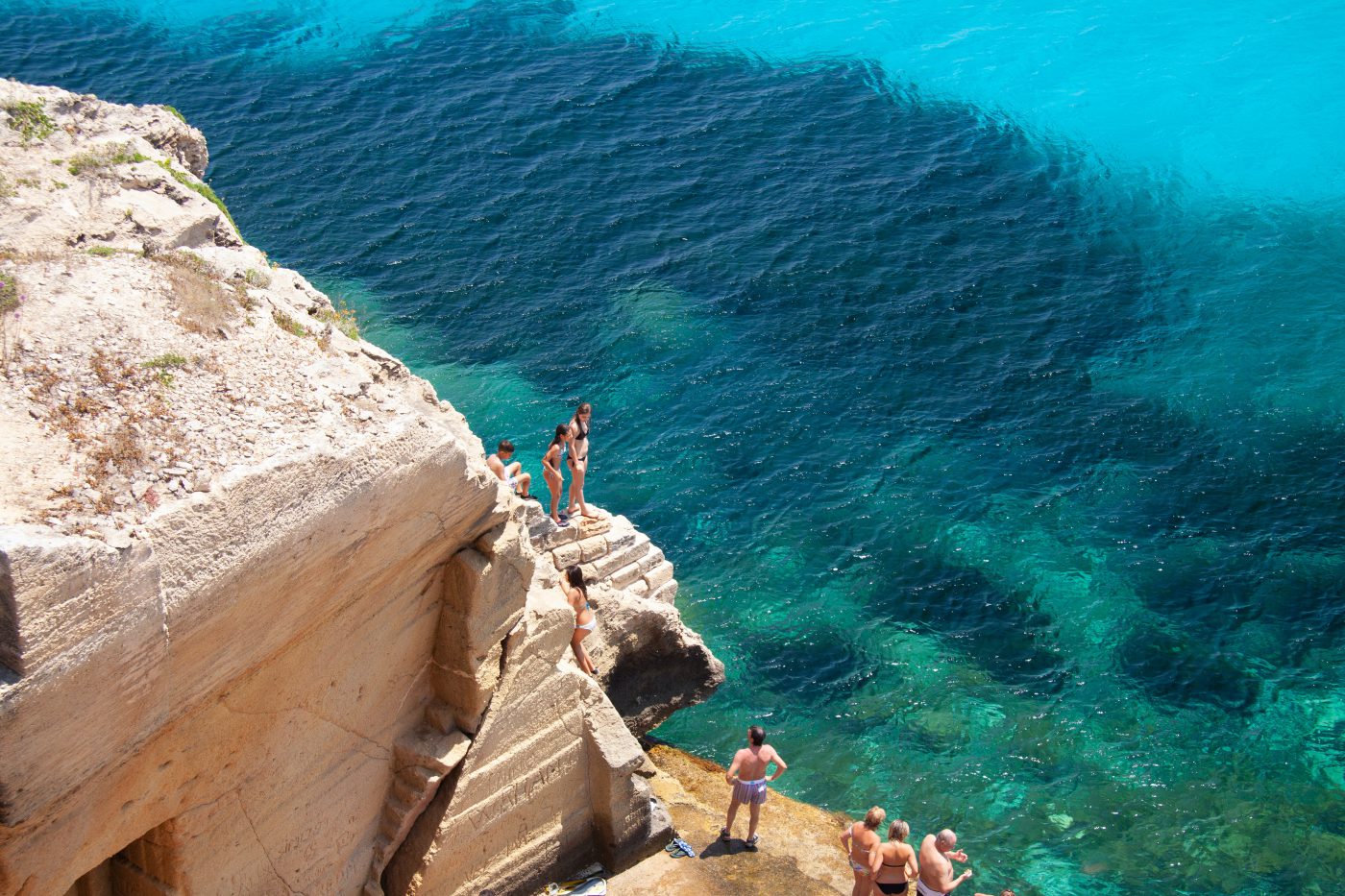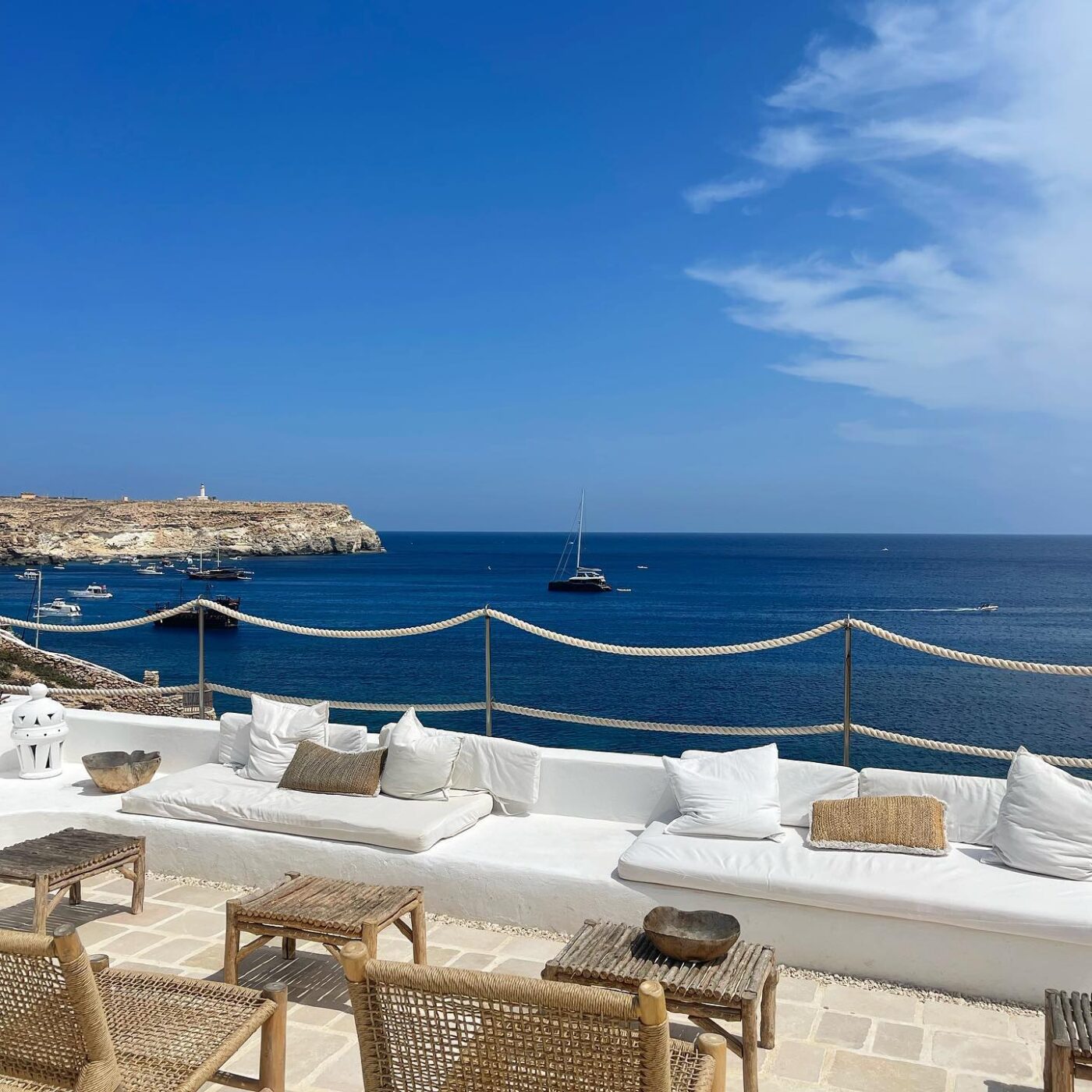PANTELLERIA
With its otherworldly landscape of volcanic rock rising from the sea, Sicily’s largest satellite island boasts a fertile wine tradition, fantastic olive oil production, and excellent opportunities for snorkeling and diving in its secret coves. The rich agricultural heritage, natural beauty, and unique climate here earned Pantelleria, nicknamed “Daughter of the Wind” by local lore, a spot on the UNESCO World Heritage list. Fly in from Palermo, Catania, or other Italian airports.
Heroic viticulture
They call it heroic agriculture because it defies extreme environmental conditions related to the constant presence of winds and low rainfall, offset by high humidity. In the succession of generations, it has been possible to perfect practices of resisting fatigue, caring for the plants, and adapting to the variety of soil, which are the strength of Pantelleria’s rural culture. In 2014, UNESCO recognized the importance and uniqueness of the “Agricultural practice of the bush vine” by inscribing it on the World Intangible Heritage List. This is the first time an agricultural practice has achieved this recognition.
The vine, in the form of the Pantelleria sapling, is cultivated in basins about 20 cm deep, useful for storing rainwater and protecting the bunches of grapes from the wind. The cultivation technique, introduced by the Phoenicians, is particularly articulated and involves only the intervention of the human hand until the harvest, which begins in late July. The zibibbo grapes, obtained from these vineyards, represent the raw material for the vinification of the fine Passito di Pantelleria.
WHERE TO SLEEP ON PANTELLERIA
Kardibà – Here, you’ll stay in historic dammusi (traditional rectangular limestone and brick houses) villas surrounded by a garden of rare beauty and diversity, pampered by the Sicilian wind and sun.
Parco dei Sesi – A renewed property inspired by its owner’s passion for the island and art. Set just 200 meters from the sea on an archeological park, enjoy private terraces, gardens, and rooftops with panoramic views.
Tenuta Borgia – Seven ancient dammusi have been charmingly and faithfully restored and lie nestled in a Mediterranean park of twelve hectares. This old school countryside estate feels just like something out of Luca Guadagnino’s A Bigger Splash.
Le Case del Principe a Pantelleria – Surrounded by Mediterranean scrub, the Dammusi del Principe all have beautiful terraces with stunning views of the deep blue sea, reachable through a private staircase that leads to the cliff below and to the small bay studded with pebbles.
Sikelia – This is the first and only 5-star luxury hotel on the island. where suites are housed in one structure of ancient dammusi. The restaurant is open to non-guests for a rooftop aperitivo at sunset or for a gourmet dinner prepared by chef Diego Battaglia.
Pantelleria Dream Resort – At Cala Tramontana, near the Arco dell’Elefante–the huge, proboscis-shaped lava stone cliff that plunges into the water and forms an arch–this elegant resort is nestled in a Mediterranean garden where the rooms are traditional dammusi all with large terraces overlooking the sea.
WHERE TO EAT ON PANTELLERIA
Osteria il Principe e il Pirata – One of the best restaurants on the island to try Pantelleria dishes such as couscous, ravioli, and the famous Pantelleria kiss, a pancake-like pastry with sweet ricotta stuffing.
Sesiventi – A favorite place for young people to have an aperitivo. Sit on the typical white roofs of the dammusi and wait for the sunset with a glass of local zibibbo.
WHAT TO DO ON PANTELLERIA
Donnafugata – Don’t miss a visit to the Donnafugata winery in the Khamma district. See their sapling vines and taste their famous passito made from zibibbo grapes. Inside the estate, you can also visit the Pantelleria Garden (an enclosure built entirely of dry stone to protect a citrus tree inside), donated by Donnafugata to the FAI.
Cantina Basile – A sunset tasting in the vineyards of Cantina Basile is not to be missed: on the premises of an old Spanish carpenter’s shop, in the Bukkuram district (Arabic for “King of Vineyards”), Fabrizio and Simona offer a familiar and refined welcome to taste the famous Passito di Pantelleria.
Lago Specchio di Venere (Mirror Lake of Venus) – This natural lake occupies the crater of a volcano in the Bugeber district, and earned it’s name because it’s said the Goddess Venus was reflected here before she met Bacchus. In addition to the fantastic scenery of flora and fauna, the lake is famous for its thermal mud and pools with water at over 50°C. Covering your body with thermal mud is said to have beneficial properties, plus it’s fun quite.
Balata dei Turchi – One of the most fascinating places on the island, it is said to have once been a natural port of call used by pirates, but today, it is instead a bay with a sensationally colored seabed and ridge. The road to get there is a bit long and not in great condition, but the scenery will surely justify the journey.
Parco Archeologico dei Sesi – About 5,000 years ago, people from North Africa settled in this area of Mursia and Cimilli and built these megalithic constructions that, only in the 1800s, were understood to be burial monuments. The term sese, in Pantesco, means a pile of stones, and, architecturally speaking, the Sesi, are dry-stone structures, elliptical in plan with a vaulted elevation development. The area used for the custody of the deceased was located in the center of the structure and could be reached through the low, narrow openings located around the perimeter of the monument.
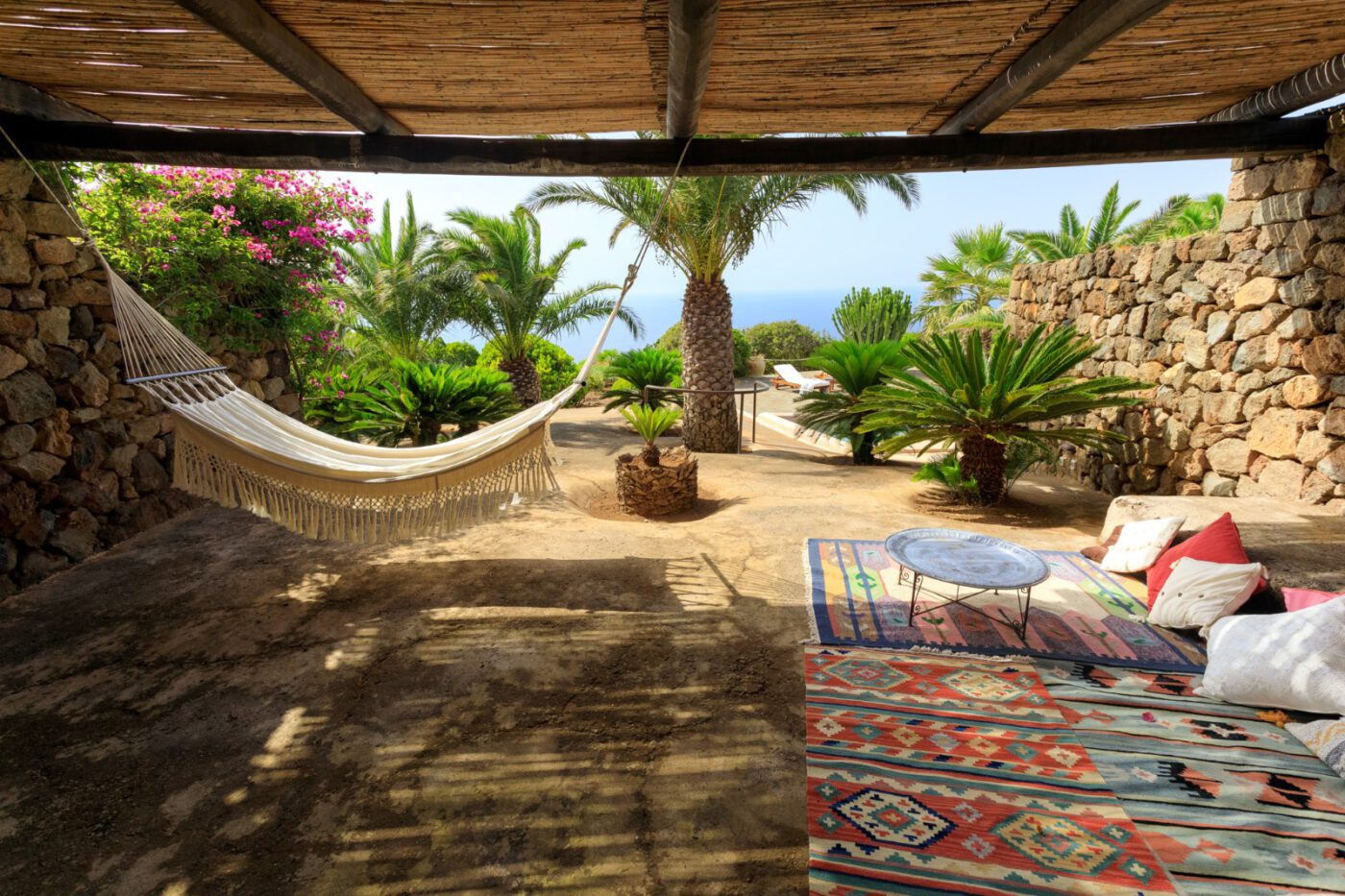
Courtesy of Kardibà

AEOLIAN ISLANDS
The Seven Sister islands–Lipari, Vulcano, Salina, Stromboli, Filicudi, Alicudi, and Panarea–together make up the Aeolian Islands, clustered together in the Tyrrhenian Sea. They aren’t easy to reach, but the turquoise waters, limestone and lava cliffs, and hiking trails that seemingly float above the sparkling sea, make it worth the effort. You can reach the Aeolian Islands by hydrofoil from Milazzo, Messina, or Naples.
SALINA
Crystal-clear water, lush nature growing on the slopes of six extinct volcanoes, blinding white houses, and the scent of olives, citrus, mulberries, capers, and grapes. Salina, the second largest Aeolian Island after Lipari, is charming, colorful, and tasteful. As of 2019, it’s among the 6 pilot islands selected by the European Union for the transition to clean energy and environmental and social sustainability. Its green soul has been chosen as a stopover for Care’s–The ethical Chef Days, a traveling kermesse conceived by Norbert Niederkofler and Paolo Ferretti.
WHERE TO SLEEP ON SALINA
Hotel Signum (Malfa) – A small village, expertly restored by the Caruso family, with attention to every tiny detail. Each room has its own individual style. Come for the panoramic terraces overlooking Panarea and Stromboli, the Mixology Bar and young Martina Caruso’s Michelin-starred restaurant.
Hotel Ravesi (Malfa) – In this old 19th century hamlet owned by the Ravesi family, the days flow slowly. The 16 rooms here retain the typical features of ancient Aeolian dwellings, and the hotel is Ecolabel certified and uses organic, raw, Km0 products for their breakfasts, light lunches, and aperitifs.
Hotel Punta Scario (Malfa) – Perched on the edge of a cliff that borders the beach below, the hotel looks like an amphitheater surrounding a lux Mediterranean garden suspended over the sea. 17 rooms, all with a small terrace or garden, overlook the gardens, pool, and sea.
WHERE TO EAT ON SALINA
Da Alfredo (Lingua) – On the seafront of Lingua, Da Alfredo is the most famous places in the Aeolian Islands. Come for the granita and cunzato (seasoned) bread, two Sicilian classics.
Pa.Pe.Ro. “Al glicine” (Rinella) – In the small fishing village of Rinella, this delicious bar has become famous for its granitas, the most popular being the one with ricotta and candied capers.
WHERE TO DRINK ON SALINA
Capofaro Locanda & Malvasia (Malfa) – Capofaro was born from the Tasca d’Almerita family’s love for the vineyard and the sea. At this inn and vineyard, surrounded by rows overlooking the water, you’ll sip Malvasia wine with 5-star views.
Caravaglio – Azienda Agricola Biologica (Malfa) – One of the best wineries on the island, with main grape varieties of Malvasia, Corinto, and Nerello Mascalese. In addition to wine, the famous Salina capers are produced here.
WHAT TO DO ON SALINA
Pollara – A jaw-droppingly beautiful beach nestled beneath a rugged volcanic crater. To get here, you’ll have to scale down some steps in the small town itself, and swim across the clear water.
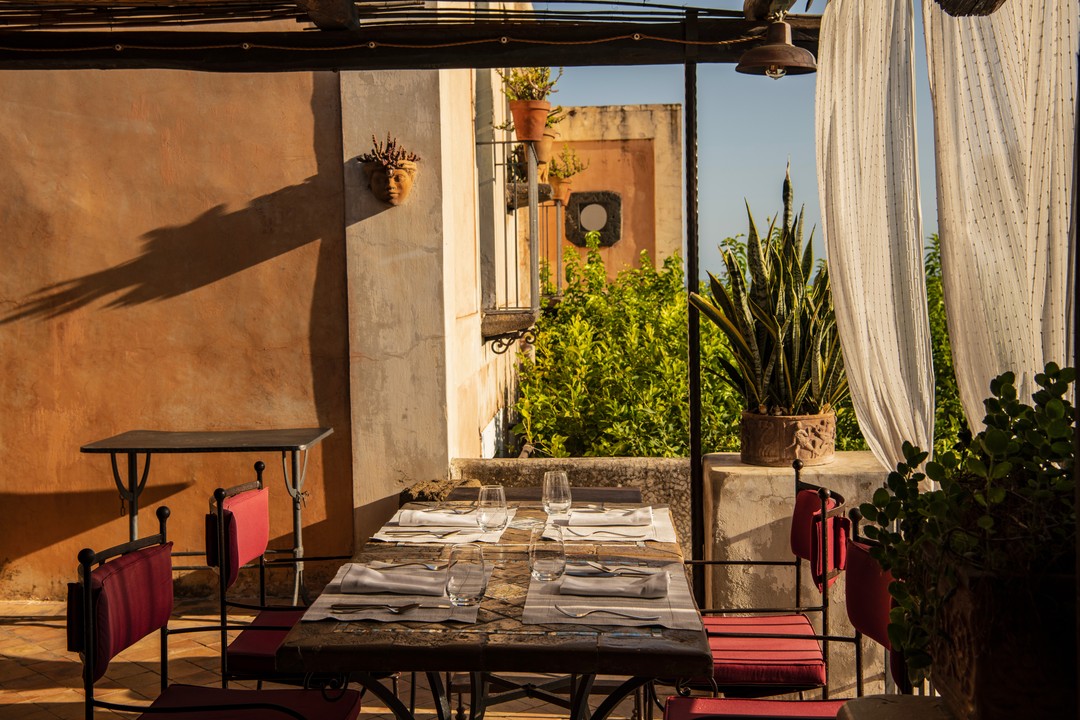
Courtesy of Hotel Signum
FILICUDI
On the smallest of the Aeolian Islands, don’t expect glitz nightclubs, sandy beaches, or 5-star hotels. But what it lacks in comfort, it makes up for in authenticity: which is, nowadays, such a rare, covetable luxury.
WHERE TO SLEEP ON FILICUDI
Casa G – This house on the exceptional island has four double bedrooms and bathrooms in an equal number with a 360º terrace overlooking only the sea.
WHERE TO EAT ON FILICUDI
La Sirena – In the bay of Pecorini a Mare, La Sirena is a simple, local spot with an excellent location right on the sea. Don’t miss trying the Sicilian staple caponata or their spaghetti with almonds.
VULCANO
WHERE TO SLEEP ON VULCANO
Therasia Resort – Choose from numerous rooms or suites, each decorated in a total Mediterranean style, for your stay at this refined and upscale resort. It happens to be the only one in Italy with two starred restaurants inside: the Il Cappero restaurant, by executive chef Giuseppe Biuso, and I Tenerumi, a vegetarian restaurant by chef Davide Guidara. New additions include a private beach club with cabanas and chaise lounges on the black volcanic sand, from which you can gaze out on neighboring Alicudi and Filicudi.
WHERE TO EAT ON VULCANO
Malvasia Pane Cunzatu & Restaurant – A wine bar with a sunny terrace and friendly atmosphere, Malvasia serves the island’s famous pane cunzatu–loaded with Aeolian gems like olives, capers, tuna, tomatoes, and mozzarella bufala–alongside fresh salads and a well-curated wine list.
Trattoria da Pina – Perched above the island’s southernmost black sand beach, Trattoria da Pina is as down-to-earth as its setting is awe-inspiring. Two local fishermen bring in daily catches, and their families prepare them to serve. Naturally, the fish and seafood are excellent, as are homemade pastas.
Ristorante la Forgia di Maurizio – Owner Mauritzio has created a unique spot on the island, which has become somewhat of a local institution. Having spent 20 years traveling back and forth to India, the menu infuses Sicilian classics with a little Indian twist. There are vegetarian and vegan options, and the tasting menu is creative and a great value.
WHAT TO DO ON VULCANO
Gelso – A tiny, off-the-beaten-path port, framing two black sand beaches that are less crowded than the other ones on the island. Follow a trail leading to an old lighthouse and the Church of Santa Maria delle Grazie.
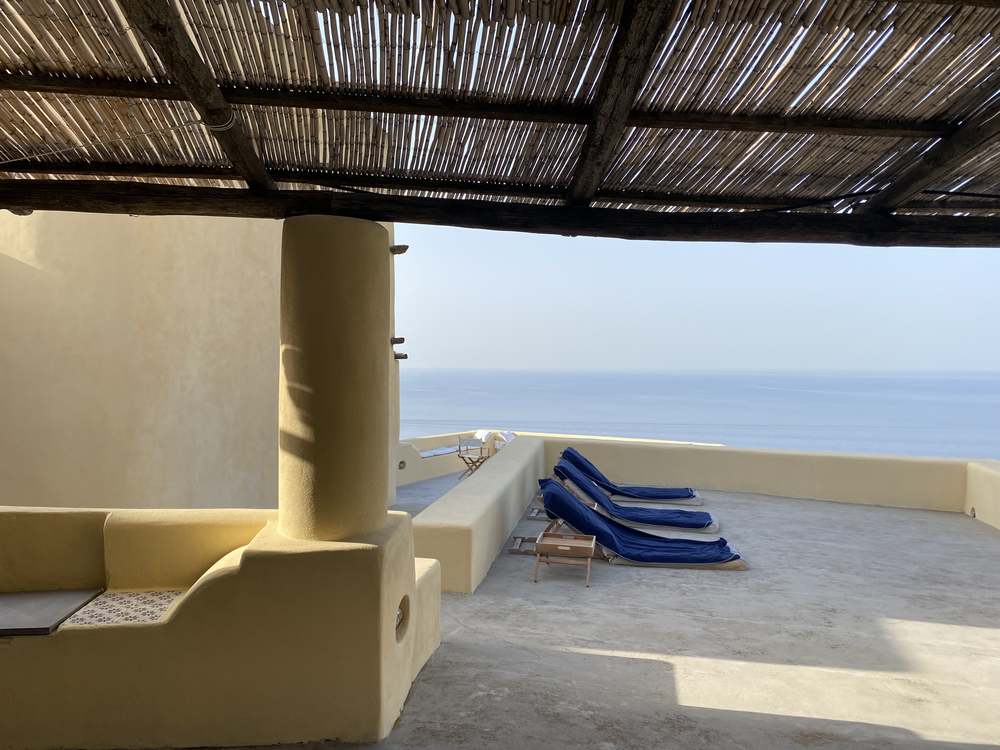
Casa G
USTICA
Ustica is a world-class spot for scuba diving, thanks to large efforts put forth to preserve its marine flora and fauna. Amongst the Mediterranean sea life, you can also dive to see archeological relics like ancient ship’s anchors and amphorae vessels, material reminders of the island’s history. To get here, take the hydrofoil or ferry from Palermo or Naples.
WHERE TO SLEEP ON USTICA
Hibiscus – A family-run farm and farmhouse, with four comfortable apartments surrounded by greenery. In the store, you can also buy wines and lentils from the island.
WHERE TO EAT ON USTICA
Il Faraglione – The most famous restaurant in Ustica, overlooking the marina, is run by the young Tranchina brothers. Don’t miss anything seafood related (on Ustica, you’ll eat the best swordfish in Sicily) and listen to live music while sipping a cocktail after dinner.
Kiki’s Lounge Bar – Between the harbor and the town, Kiki’s Bar is open from breakfast until late in the evening. Sink your teeth into the delicious Vastedda usticese, a sandwich stuffed with alalunga (albacore tuna), shallots, and tomato, ideal for lunch or as an afternoon snack after a day at the beach.
WHERE TO SHOP ON USTICA
Specialità di Maria Cristina – Maria Cristina’s workshop, a living slice of history of the island, is the ideal place to stock up on preserves, sauces, pesto, jams and typical products of Ustica–lentils, capers, albacore, swordfish roe, traditional biscuits–to take home as souvenirs.
WHAT TO DO ON USTICA
Ailanto Park – Once a landfill, now instead is this wonderful botanical area in Contrada Falconiera, full of native plants and paths among the rocks overhanging Cala Giacalone. The park hosts a multipurpose space with a variety of activities for adults and children.
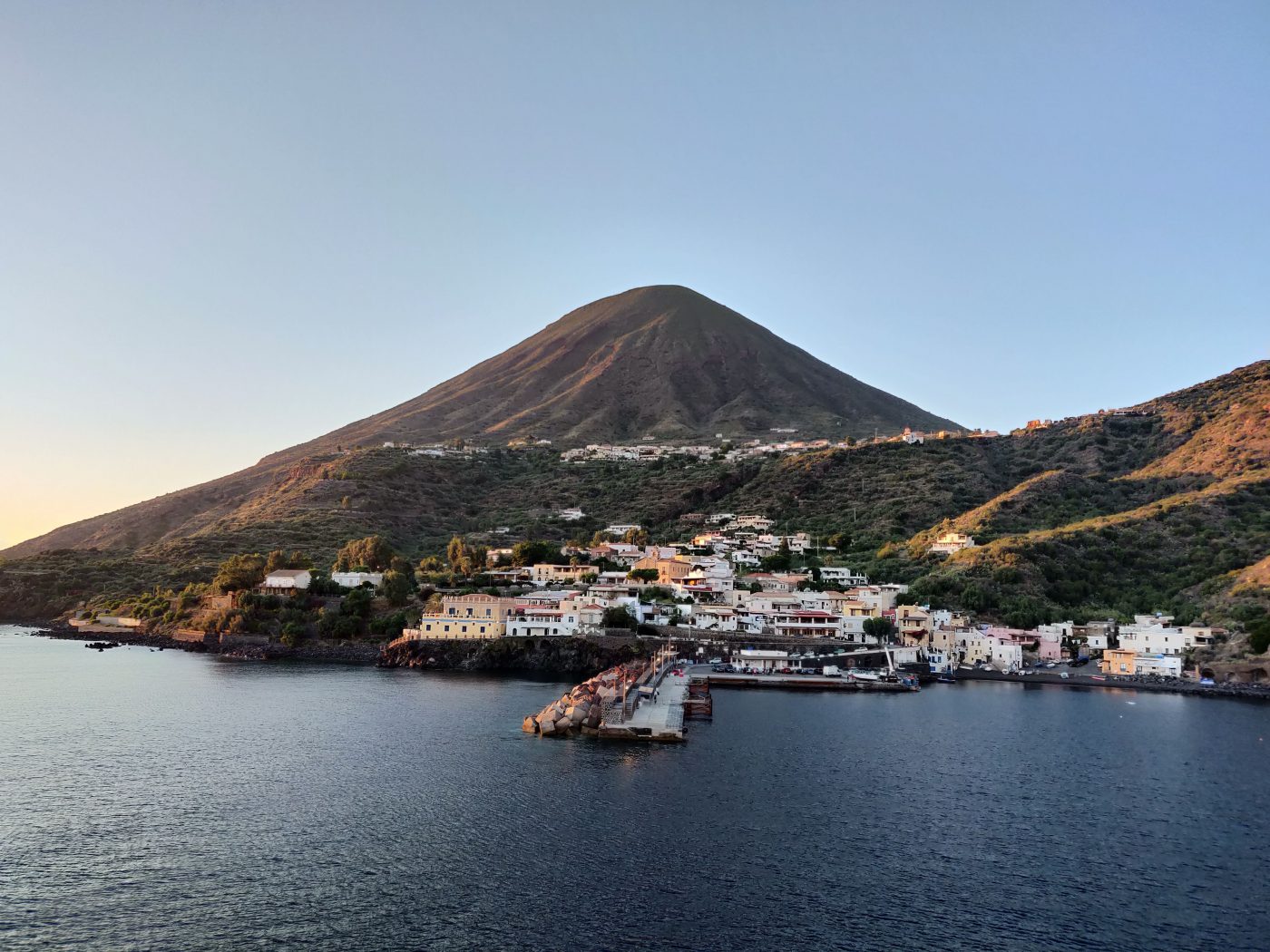
EGADI ISLANDS
With rugged, uncontaminated natural landscapes, rows of white houses with blue windows mimicking the color palette of the limestone and sea, and a fishing economy centered on bluefin tuna, the Egadi Islands feel a world apart from Sicily’s well-trodden tourist track. Here, the pace is slow and nature runs wild–the Egadi Islands of Favignana, Levanzo, and Marettimo are all part of Europe’s largest protected marine reserve. The North African influence can be strongly felt here through local cuisine and custom, as Tunisia lies just a stone’s throw away. The Egadi Islands are reachable by hydrofoil or ferry from the port of Trapani.
FAVIGNANA
This Egadi island, when viewed from above, resembles the profile of a butterfly.
WHERE TO SLEEP ON FAVIGNANA
Nido del Pellegrino – This wild resort on a promontory overlooking the protected marine area of Egadi is the result of a skillful redevelopment of military barracks. At guests’ disposal are panoramic terraces, suggestive paths, and a private cove equipped with sunbathing platforms and a ladder for dips in the sea.
WHERE TO EAT ON FAVIGNANA
La Pinnata – A renowned emporium of Favignana where you can find various Sicilian delicacies. Specialties are boards stacked with typical products such as tonnara, meats, cheeses, and the yummy pane cunzatu.
Camparía Lounge – Set in a natural cove, this multipurpose restaurant is in a large, open-air structure, where men once worked the fishing nets of the Tonnara Florio. Come for aperitivo, an upscale dinner, or late night drinks, where international musicians, artists and DJs take turns to enliven the summer nights.
WHAT TO DO ON FAVIGNANA
Favignana Tonnara Museum – A visit to the former Florio factory is essential for those who want to get to know the glorious history of the tonnara (a traditional tuna fishing system) and what it represented for the economy of Favignana and its inhabitants. This museum was home to one of the largest tonnare in the Mediterranean.
LAMPEDUSA
Edge even closer towards Tunisia and you’ll hit Lampedusa, a beautiful island known for tranquil, turquoise waters and beaches set in secret coves. This is the first port that migrants reach when they get to Italy from North Africa and the Middle East, making for a diverse local population. Reachable by plane from Palermo / Catania or other Italian airports.
WHERE TO SLEEP ON LAMPEDUSA
La Calandra Resort – The prized stays in Lampedusa are the typical stone dammusi, and the most beautiful are those of the La Calandra resort. The houses are harmoniously inserted into the landscape, overlooking the cliff of the magical Cala Creta, suspended between rocks, turquoise sea, and Africa. Guests can also take out a mahogany Turkish gulet, the typical boat of the Mediterranean, for sea excursions.
WHAT TO DO ON LAMPEDUSA
Spiaggia dei Conigli – Soft, white sands, sparkling, clear waters, and spawning sea turtles make this beach the stuff of dreams. Protected by the Riserva Naturale Isola di Lampedusa, it’s managed to retain its natural beauty and not be overrun by tourism.
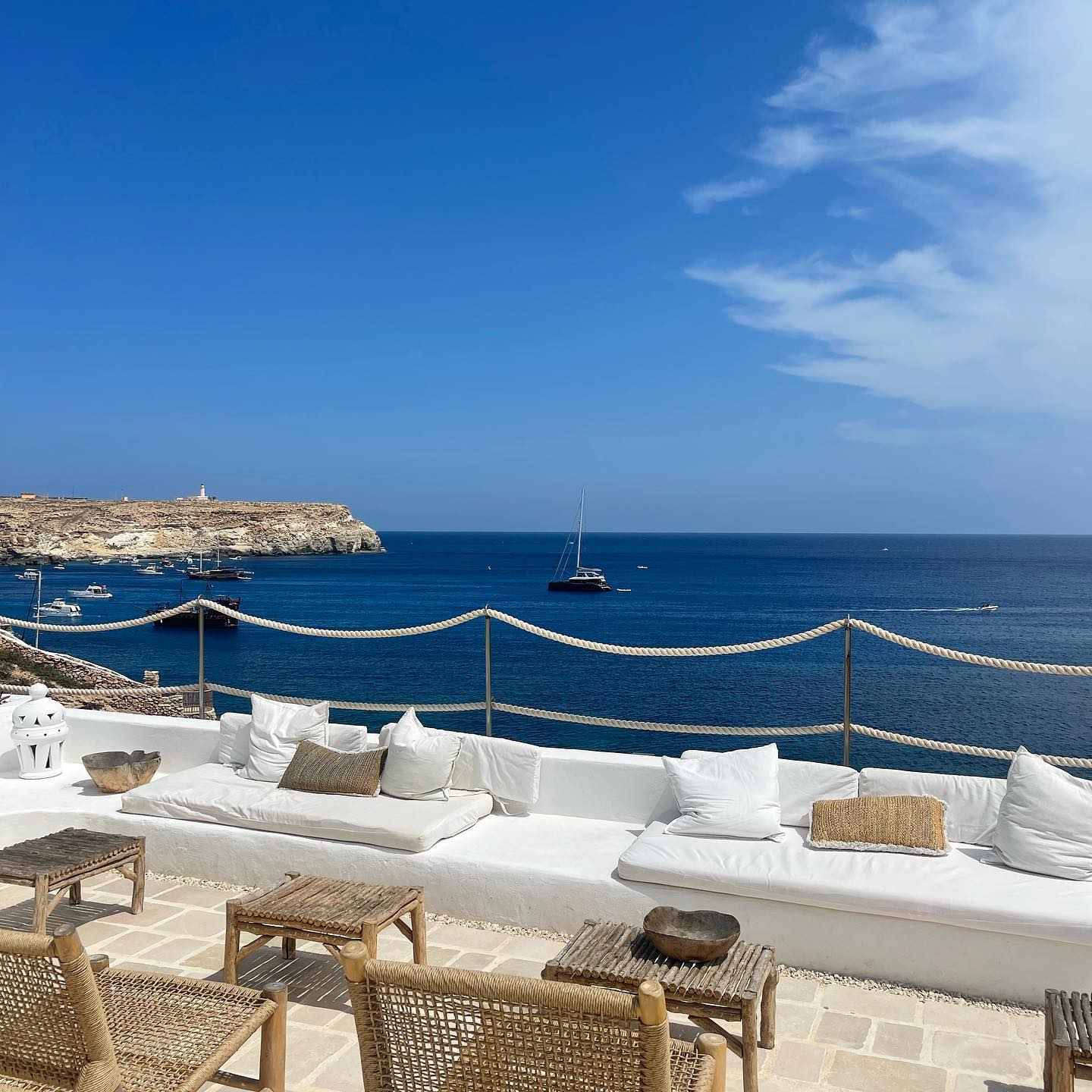
Courtesy of La Calandra

